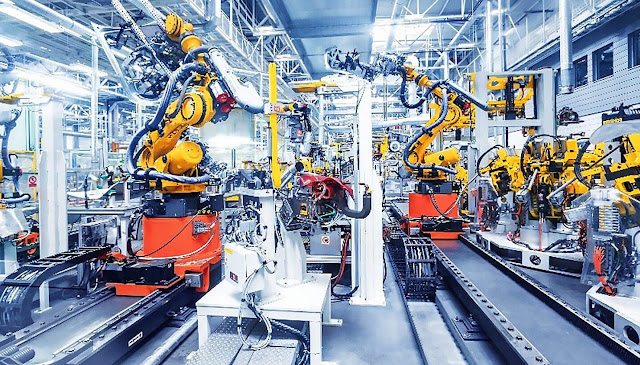Corrosion and control of iron facilities in the gas and oil production industry
Corrosion control by lifting iron installations on concrete platforms:
The iron installation in the oil sector might be buried like a tank or underground pipe or constructed above ground.
If the iron facility is constructed above ground just like a long rail pipe extending for many kilometres that transfers crude oil production from oil field production collection centers to refineries, or the road passed by this pipeline is located in a dry, non-humid climate zone "keep in mind that when there is no water or moisture, there won't be corrosion at all".
The external corrosion of this tube can be easily controlled by lifting this facility on platforms or concrete racks spaced above the ground.
Let's suppose that one concrete platform for every 100 meters along the pipeline that lifts the tube in order to space the iron pipe from the ground.
This land may be rich in salts, and any water accumulated in low points, ground water or seasonal rains could dissolute and melt these salts to obtain an active electrolytic medium that can help in transmitting free ions.
This might increase corrosion due to the completion of the electric galvanic cell circle; which consists of an anode and cathode, an electronic path and ionic path (see galvanic cell).
Coating metal facilities with industrial dyes:
Industrial dye of all kinds the organic and inorganic is considered very important and familiar to control corrosion, whether this corrosion is internal due to the gas and liquid fluid pumped into the tube or external corrosive due to the reaction of the iron of the tube with the surrounding environment such as soil in case the tube is buried or exposed to wet air.
The desirable qualities in dye lie in its resistance to abrasion, a deep cut or scratching, and mechanical shocks resulting from unintentional side effects during the construction of the pipeline such as inadequate storage and poor professional technical handling with the line, negligence during its construction, mismanagement the transport of its parts into the construction sites in the open field.
It is also preferable to use a dye resistant to the flow of harmful ions and oxygen molecules.
Here, the oxygen molecules that are dissolved explicitly in the water of soil or atmospheric water appear on the roofs of the pipes in the form of dew drops because of high humidity, which significantly accelerates the frequency of corrosion.
Even in low concentrations such as 50 ppm (or 50 micrograms per liter), the oxygen dissolved in the water transforms the aqueous medium dissolved into a medium that helps to corrode because oxygen heavily consumes free electrons in metals.
It is worth mentioning that most of the corrosion problems, such as peeling and flaking dye, are because of hiring unskilled and untrained labor to put this dye with the thickness required according to international industrial standards considered in the application of paint. The factor of human error is very effective.
It is essential to choose the excellent dye to resist bad climatic conditions, especially in the Arab/Persian Gulf region, such as earthen tornadoes and warming of the atmosphere.
The warming of the paint causes peeling and falling, which leads to the detection of iron and thus corrosion.
If you are planning to develop your skills you can attend the Corrosion and control of iron facilities training course or any other oil and gas training courses in London at LPC Training



Comments
Post a Comment